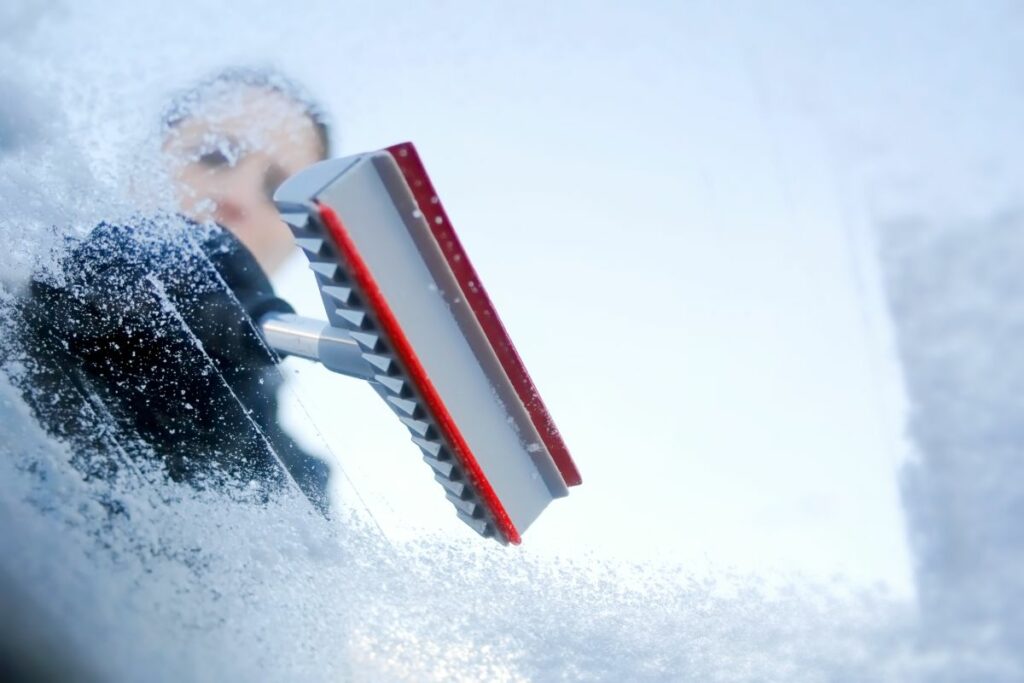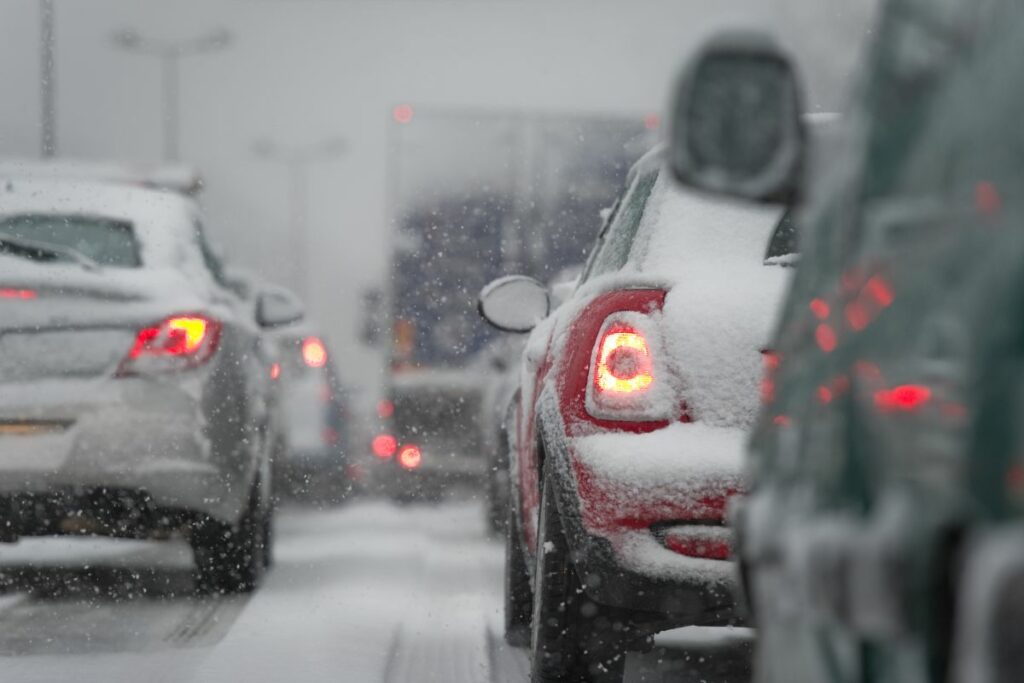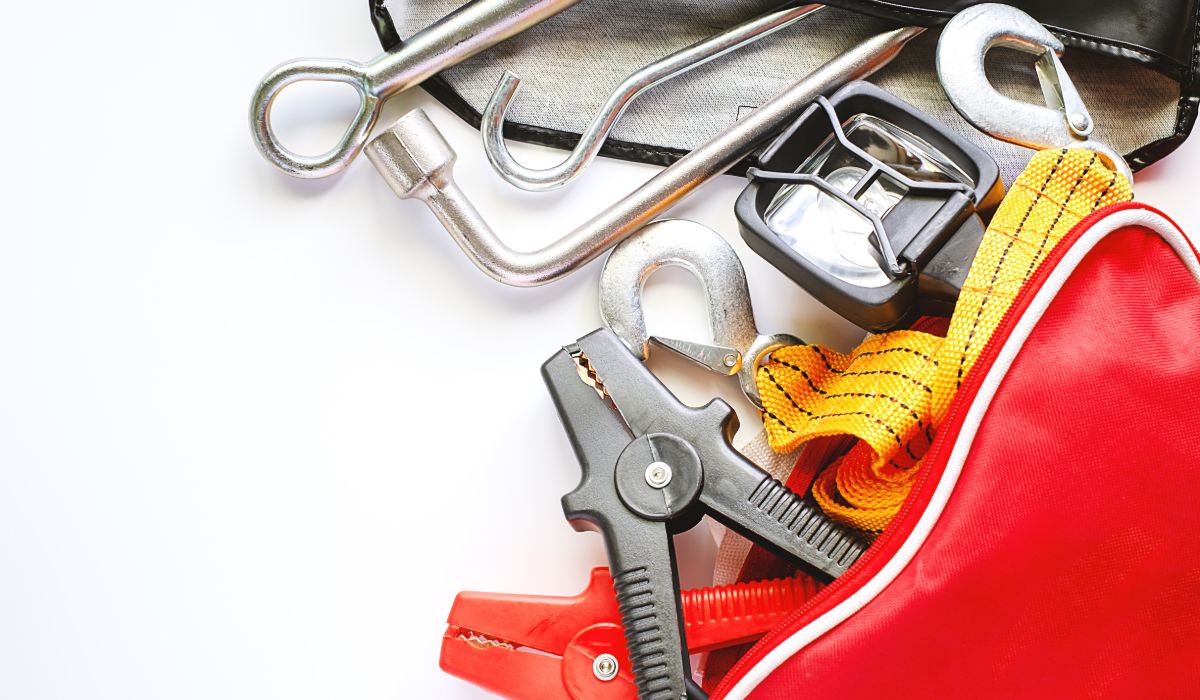As picturesque as snow-covered roads are in the winter, they can also be incredibly dangerous to drive on. An unprecedented snowstorm, a patch of slippery ice, and fluid freeze can lead to all kinds of dire situations. And while winter-proofing your car can minimize some risks, there’s just no telling what can happen on the road.
As such, it’s best to prepare a winter driving emergency kit that can either help you get on the road again or keep you safe and comfortable as you wait for help to arrive.
Your winter driving emergency kit
Whether you’re driving a brand new car, a practical used car, or a winter-ready beater, you should have the following items stashed in your trunk:
The essentials
- A portable shovel: A storm can immobilize a parked car in a matter of hours, but not everyone has the trunk space to lug around a full-sized shovel. Thankfully, you can find compact, foldable shovels in most military supply shops.
- A portable jumper: In the past, if your battery died in the middle of the road, you had to wait for another vehicle to flag down so you could jumpstart the battery. These days, all you need is a portable jumper. These things are relatively inexpensive and can get you out of a rut in no time.
- An ice scraper: Ice buildup on windshields and windows can significantly reduce visibility. Always bring an ice scraper and snow brush so you can get rid of ice without damaging your glass.
- Tow straps: If you ever find yourself in a shallow ditch, having tow straps on hand can be a real life-saver – just make sure your straps match the weight of your vehicle. Also, read your car’s user manual and learn how to properly tow a vehicle.
- A basic tool kit: Basic tools (e.g. a screwdriver, a wrench, pliers, and some tape) can help you get through minor issues...or at least help you last until the next service station.
- A tire changing kit: This is something you shouldn’t leave home without, no matter the weather. Some folks go as far as bringing along a portable air compressor that can be plugged into the 12v outlet of their car.
- Flashlights and road flares: We all know how light becomes a scant resource during the winter. Flashlights are great for when you need to go under the hood or change a flat in the dark, while flares and/or roadside triangles keep you and your vehicle safe from oncoming traffic. Don’t forget to pack extra batteries!
- A poncho: This’ll keep you warm and dry even if you have to spend hours outside your car attending to repairs.
- A first-aid kit: While a basic first aid kit will suffice for minor scrapes, it’s always a good idea to pack extra medications, especially if you have certain health risks.
- A portable phone charger: Sure, you can hook up your phone charger to the dashboard. But what happens when your car battery conks out? Pack a fully-charged power bank in your toolkit and you won’t have to worry about losing what is possibly your only line of communication during a crisis.
- Ziplock bags: Not only are these bags good for storing damp clothing, but they can also keep your side mirrors from freezing over during sub-zero temperatures.
The emergency survival kit
If you have extra space in your car and you’re expecting to drive in particularly bad weather or through a more rural route, be sure to carry an emergency survival kit. These items should help you get through the night if ever you find yourself stranded in a blizzard:
- Gloves, jackets, sleeping bags, and blankets to keep everyone warm and cozy.
- Non-perishable foods like nuts, protein bars, trail mix, and canned food, as well as bottles of drinking water to stave off hunger and dehydration.
- A lighter and/or box of matches for when you need an extra source of heat.
- A bag of sand, cat litter, or a traction device to give your tires a boost of traction over slippery terrain. Here’s a tip: If you don’t have any of these items, try rolling your wheels over your car’s floor mats.
How to prepare your car for winter driving

Preparing for a drive in the snow is about so much more than just packing some emergency tools. After all, these tools are meant for emergency purposes only. You want to avoid getting to that point in the first place.
You can do this by winterizing your car – keep reading for our top tips below:
Roll out the winter tires
Winter tires are made of specialized rubber compounds that don’t lose their suppleness in below-zero temperatures. They’re also designed to have grooves and edges in the tread to wick water off the ground, giving you more traction.
Speaking of tread, make sure your tire tread can still hold up to the challenges of winter driving. If you don’t know how to gauge whether your tire tread is still safe for driving, you can just do the “Penny Test”.
All you have to do is to stick a penny in the groove of your tire, with Abe’s head facing you. If you can’t see the top of his head, you’re in the clear. But if you can see Lincoln’s head peeking from the groove, it’s time for a new set of tires.
Always check your tire pressure before leaving
Low temperatures can cause tire pressure to drop. Keeping tires inflated to their proper PSI can give you better traction over wet and icy roads and save you from potential accidents. If possible, bring a portable air compressor with you at all times.
Have your battery checked
Winter is when most car batteries start to fizzle out. Once the temperature starts to drop, head to your nearest service center to have your battery, cables, and fluids inspected by a professional. That way, you avoid getting stuck in the biting cold with a car that won’t start.
Replace your wiper fluid
It’s not enough to carry an ice scraper with you at all times. If you want to keep your windshield from becoming an icy mess, it’s important that you switch to a windshield wiper fluid that’s made specifically for colder temperatures.
Wash your car regularly
Road salt, sand, chemicals, and snow can all cause rust and corrosion, which affect the integrity of your car. If you don’t want any major parts to get damaged by the elements, wash your car at least after every snowstorm.
5 winter driving tips for a safe trip

If the weather is bad, it’s always best to just stay at home and wait it out. But if you absolutely must head out, keep the following tips in mind:
Leave earlier than usual
Travel time increases as the weather worsens. People will be driving slower, accidents are more likely to happen, and you may even find yourself taking detours to avoid unplowed roads. To avoid speeding through all this, make sure you plan ahead and account for more travel time.
Drive slow
Icy roads are slippery and can cause cars to skid, while snowstorms can clog up windshields and limit visibility. To avoid accidents, you’ll need to give yourself more time to react. Drive slower than usual and remember to keep your distance from other vehicles. A good rule of thumb is to give yourself a stop distance of 6 to 10 seconds.
Accelerate and brake gently
If you want to avoid sending your car into a tailspin, don’t hit the gas or slam your brakes too hard. This is another reason it’s important to maintain a safe distance from other vehicles. If you don’t allot a big enough gap between you and the car in front of you, you could be forced to hit your brakes too hard to avoid rear-ending them.
Watch out for oversteer
The two common steering problems during slippery conditions are oversteer and understeer. Oversteer is when you turn too fast on snow or ice, causing your car’s weight to shift to the front tires. This causes the rear to swing out the opposite direction you were turning.
If you find yourself oversteering, just try to steer towards the direction of the skin, then gently press on the gas to get control. Avoid hitting the brakes because this can make you lose control even more.
Try not to stop when climbing hills
If possible, try to drive up a hill without stepping on the brakes. It’s hard enough to get traction on an icy flat road; with gravity against you, you could find yourself slipping down and potentially putting those behind you in danger.
The bottom line

Driving in winter is no easy feat. With so many potential risks and hazards involved, it’s vital to prepare for the worst. Always carry a winter driving emergency kit with you so you can take care of your car and yourself through the cold.
Check out our blog at Carpages.ca for more tips on driving and maintaining your car through winter. If you want to find the perfect car for winter driving, feel free to browse our listings!
